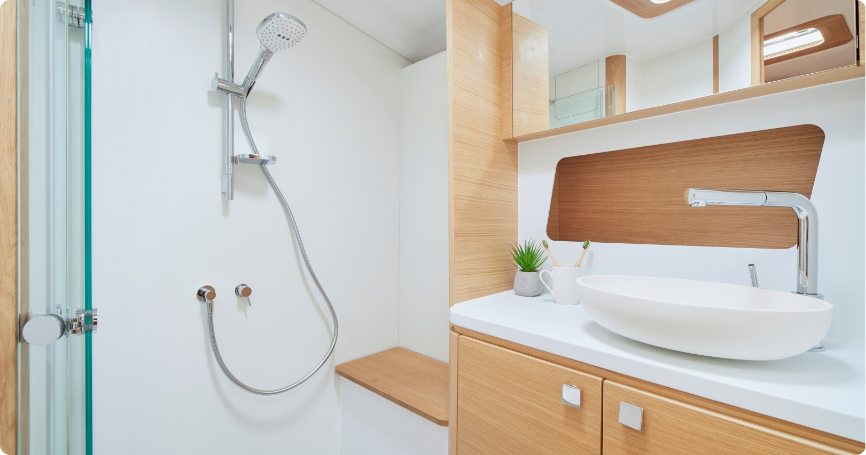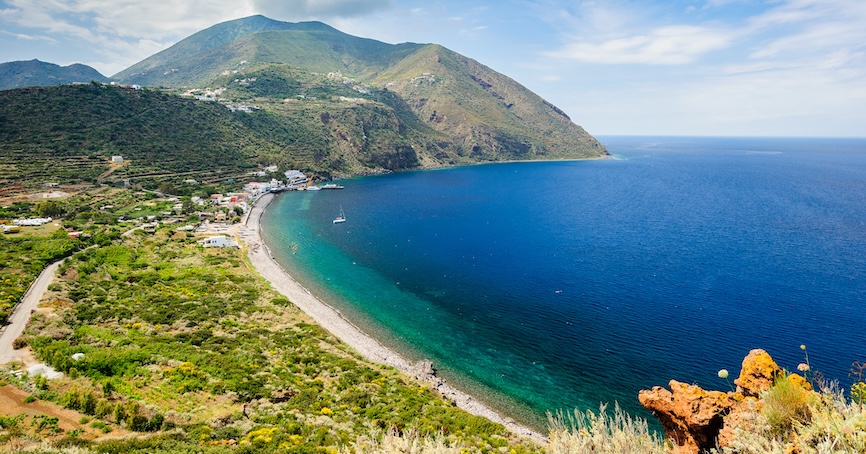Let’s be honest—using the bathroom on a boat isn’t the most glamorous topic. But like any essential task, it’s something that must be addressed. This isn’t about awkward conversations but about ensuring comfort onboard, harmonious coexistence with fellow sailors, and respect for both the boat and the sea.
As anyone familiar with boating knows (and even first-time sailors quickly realize), onboard bathrooms are compact, offering minimal room for movement. While experienced sailors or seasoned campers may find this obvious and unproblematic, first-timers might feel intimidated—some even resolve to avoid the onboard facilities altogether, relying on shore stops and more comfortable port bathrooms. While this might work for the most determined, it can also detract from the vacation experience. For everyone else, getting accustomed to onboard facilities is well worth the effort and will soon feel natural, thanks to tips from the skipper and this guide.
A Tiny Sink
Whether the boat is large or small, and whether it has one or multiple bathrooms, the facilities will always be compact. In this optimized space, you’ll find a small sink and an equally small toilet. Let’s start with the sink.
Though smaller than what you’d have at home, the sink functions in much the same way, with a faucet and often a mixer for adjusting temperature. Since the fresh water comes from limited onboard tanks, it’s important to use it sparingly. For instance, instead of leaving the tap running while brushing your teeth, use a single glass of water for rinsing.
The Showerhead and Shower
The tap often doubles as an extendable showerhead for use as a bidet or even a full shower, especially if the boat lacks a separate shower stall. This option is more common during winter navigation. Otherwise, showering is usually done on the aft deck, where it’s both practical and refreshing.
After a swim, lather up while still wet, rinse off in the sea, and finish with a quick freshwater rinse using the outdoor showerhead. This minimizes the use of precious onboard water.
Water and Soap Usage
Regardless of whether you wash indoors or outdoors, any soap used will eventually end up in the sea. To minimize environmental impact, opt for highly biodegradable products, preferring solid soaps and shampoos to liquid alternatives.
If washing indoors, any water on the floor can be removed using the bilge pump, which drains all accumulated water from below deck. As for drying, towels, wind, and sun will usually do the trick. If you’re sailing in colder weather, consider a 12-volt travel hairdryer or make use of port facilities for styling needs.
Toilet Operations: Pumps, Valves, and Sea Intakes
Now, let’s tackle the trickiest part—the toilet. Compact in size, the marine toilet operates differently from its household counterpart. Male sailors are advised to sit while using it to avoid mishaps, especially when the boat is in motion.
Marine toilets rely on a pump system to function, drawing seawater for flushing. Classic manual toilets have two sea intakes—one for bringing water in and another for discharging it. A single pump controls both, with a valve lever to switch between intake and discharge modes.
To flush, first position the lever to the intake setting to allow water into the bowl. Pump the handle to fill the bowl, then switch the lever to the discharge setting and pump again to empty it.
Avoiding Clogs
It’s always better to over-pump. Seawater is free, and thorough pumping reduces the risk of clogging the narrow pipes. Only human waste should go into the toilet; toilet paper should be used sparingly or avoided entirely. Instead, dispose of it in a designated bin, which can be emptied at the port.
After use, always return the valve lever to the discharge setting and close the sea intakes to prevent accidental flooding. Forgetting this step could lead to disastrous consequences.
Common Sense and Courtesy
Beyond the technical details, courtesy and common sense are essential. Unless the boat has a blackwater tank, waste is typically discharged directly into the sea. To minimize environmental impact, only use the toilet for absolute necessities. Avoid using it in ports, anchorages, or near swimmers and other boaters.
If the shore is within reasonable reach, patience and courtesy suggest waiting for a land-based facility. These small efforts ensure a more pleasant experience for everyone while protecting the marine environment.





